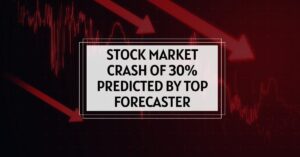Hey there, house hunters and home sellers! Let's dive into the latest housing market trends from Realtor.com. This week's data offers a glimpse into what's happening with mortgage rates, inventory levels, and how long homes are sitting on the U.S. housing market. Here are the latest trends in the housing market.
Weekly Housing Market Update: A Look at the Numbers
| Housing Data | All Changes Year Over Year | Year-to-Date 2024 | Week Ending April 27, 2024 | Week Ending May 4, 2024 | Week Ending May 11, 2024 |
|---|---|---|---|---|---|
| Median Listing Prices | 0.2% | -0.5% | 0.0% | 0.0% | 0.0% |
| New Listings | 10.1% | 10.4% | 3.6% | 6.6% | 10.4% |
| Active Listings | 21.1% | 33.3% | 33.7% | 35.0% | 33.3% |
| Time on Market | 2 days faster | 1 day slower | 1 day faster | 1 day slower | 1 day slower |
Mortgage Rates Settle (For Now)
There's some good news for those eyeing a home purchase. After five weeks of climbing, mortgage rates finally took a breather last week. But here's the catch: they're still hovering above the 7% mark. These high rates have been keeping some sellers on the sidelines, which means the number of new listings coming onto the market hasn't been as strong as when rates were lower.
Both buyers and sellers are waiting with bated breath for rates to dip further. Lower rates would make buying a home more affordable and entice more sellers to list their properties.
The Down Payment Advantage
One interesting trend is the size of down payments. In the first quarter of 2024, buyers put down more money upfront compared to both the previous year and even pre-pandemic levels. This could be due to a few factors. First, with limited inventory, buyers might be using larger down payments to make their offers more attractive.
Second, some buyers might have more cash on hand from selling a previous home or due to higher earnings. Finally, with high mortgage rates, putting down more money upfront allows buyers to minimize their loan size and keep their monthly payments under control.
Encouraging Signs on Inflation
There's a glimmer of hope on the horizon when it comes to mortgage rates. This week's Consumer Price Index (CPI) data, which tracks inflation, showed some improvement. This is a welcome sign because inflation can heavily influence mortgage rates. Additionally, job market data suggests a potential cool-down, which could also have a positive impact on rates.
What's the Deal with House Listing Prices?
Here's a surprising trend: the median listing price has actually held steady compared to last year for the second week in a row. This might seem counterintuitive with rising mortgage rates, but there's an explanation. The number of for-sale homes, especially those in the affordable range (between $200,000 and $350,000), has been increasing annually. This influx of lower-priced listings has helped to balance out the overall median price.
However, it's important to note that the median listing price per square foot is a different story. It actually increased by 3.8% compared to last year. This suggests that there were more smaller homes available for sale last week compared to the same time last year.
Sellers Are Still Listing, But the Pace is Slowing
Let's talk about new listings, which is a good indicator of seller activity. The number of new listings edged up 6.6% year-over-year this week. While this shows sellers are still entering the market, the year-over-year growth rate has slowed down compared to previous weeks. This could be a response to the still-high mortgage rates.
The good news for buyers is that there are more options out there. For the 27th week in a row, the number of active listings (homes for sale) was higher than the previous year. In fact, last week saw the highest number of homes for sale since August 2020! This means buyers have the most choices they've had in nearly four years. However, it's important to remember that inventory levels can vary depending on location. The South leads the way with a whopping 43% increase in year-over-year inventory, while the Northeast saw a more modest increase of just 4%.
Homes Are Still Selling Quickly, But Not Quite as Fast
The time it takes for a home to sell has inched up slightly compared to last year. This week, homes sat on the market for one day longer than they did at this time in 2023. However, the difference is small, and the overall selling pace remains faster than pre-pandemic levels. This indicates the housing market is still somewhat competitive, with many buyers vying for the available homes.
The high down payments we mentioned earlier are another sign of this competitiveness. Buyers are willing to put down more money upfront to win bidding wars and keep their monthly payments manageable.
Predictions for the Housing Market
The summer buying season might be a transitional period for the housing market. It likely won't be a scorching hot seller's market like the past few years, but it also shouldn't be a buyer's bonanza with fire-sale prices. It could be a good time for patient buyers who are ready to pounce if they find the right house at the right price.
Here are some predictions for the summer housing market, piecing together the trends we just discussed:
Inventory: Inventory is likely to stay elevated compared to the past few years. This means buyers will have more choices and potentially more negotiating power. However, keep in mind that regional variations exist, with the South boasting a much higher inventory increase than the Northeast.
Prices: Nationally, skyrocketing home price growth is likely to cool down. The median listing price might even hold steady compared to last year, but it depends on the mix of houses being sold (e.g., more small homes could bring the average price down).
Sales Pace: The housing market might see a slight slowdown compared to the breakneck speed of the past few years. Homes might sit on the market for a few days longer than in 2023. This could be due to continued high mortgage rates or simply because buyers have more options to choose from.
Mortgage Rates: This is the biggest wildcard. If mortgage rates drop, it could trigger a surge in buyer activity and potentially reignite some bidding wars. However, if rates stay high or even increase, buyer enthusiasm could wane further. The Federal Reserve's decisions and overall economic data will heavily influence mortgage rates this summer.
The Takeaway: The housing market is in a bit of a wait-and-see mode. Mortgage rates are the key factor for both buyers and sellers. If rates come down, we could see a surge in activity on both sides of the market. In the meantime, buyers are finding more options, and sellers are still entering the market, albeit at a slower pace.











